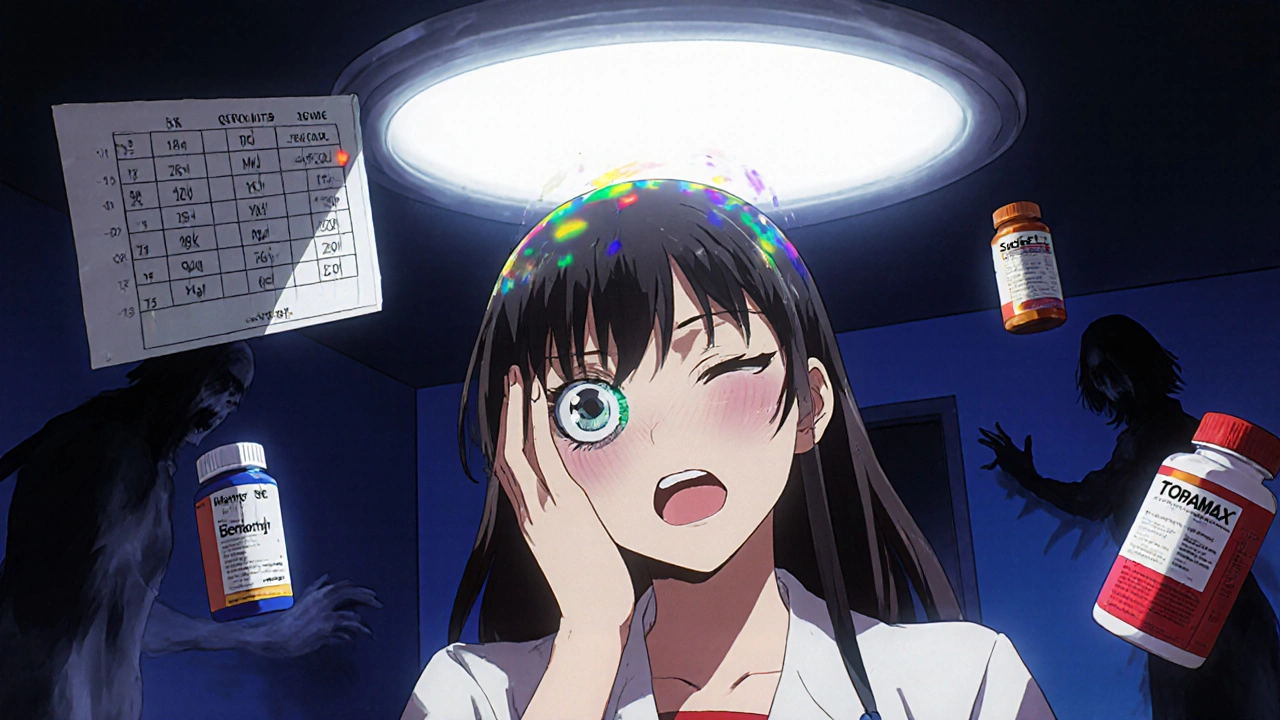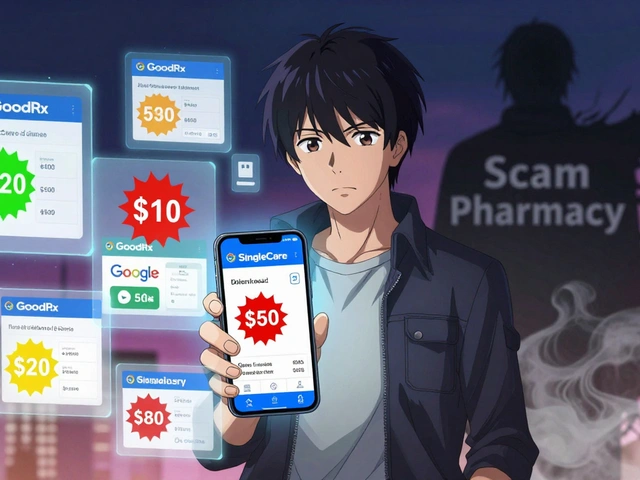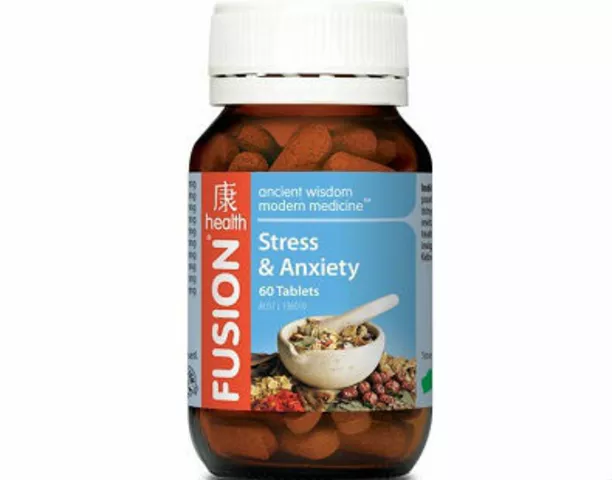Medication-Induced Glaucoma Risk Checker
This tool helps you determine if your current medications might pose a risk for acute angle-closure glaucoma, a sudden and severe eye emergency. Only 25% of patients with this condition have ever been informed they have narrow angles. Your risk depends on both your medications and your eye anatomy.
Imagine waking up with a blinding headache, your vision blurry, and your eye feels like it’s going to burst. You see halos around lights. Nausea hits. You rush to the ER, and they tell you it’s a migraine. But it’s not. It’s acute angle-closure glaucoma - and it’s being triggered by a medication you took just hours before. This isn’t rare. It’s preventable. And every hour counts.
What Happens When a Medication Blocks Your Eye’s Drainage System
Your eye constantly produces fluid - called aqueous humor - that flows through the front chamber and drains out through a mesh-like structure called the trabecular meshwork. In people with narrow angles, this drainage pathway is already tight. When certain medications cause the iris to swell or the pupil to dilate, the iris can physically block that drainage channel. Fluid builds up. Pressure spikes. Within hours, the optic nerve starts dying. This isn’t slow, silent glaucoma. This is an emergency. Intraocular pressure (IOP) can jump from a normal 15 mm Hg to 60 or even 80 mm Hg in under 24 hours. Permanent vision loss can happen in as little as six hours if pressure stays above 40 mm Hg. The American Academy of Ophthalmology calls this one of the most preventable causes of sudden blindness.Which Medications Are Most Likely to Trigger This?
It’s not just one drug. It’s a group of common prescriptions and over-the-counter remedies you might never think twice about:- Anticholinergics - like tropicamide (used in eye exams), diphenhydramine (Benadryl), and oxybutynin (for overactive bladder). These relax the iris muscles, causing the pupil to widen and physically block the drainage angle.
- Adrenergic agents - such as phenylephrine (found in nasal sprays like Neo-Synephrine and some eye drops). These cause the iris to bunch up and physically obstruct the angle.
- Sulfa-based drugs - including acetazolamide (Diamox), sulfamethoxazole (Bactrim), and topiramate (Topamax). These can cause the ciliary body to swell, pushing the iris forward.
- SSRIs and tricyclic antidepressants - paroxetine (Paxil), amitriptyline, and sertraline can have anticholinergic side effects, especially in older adults or those with pre-existing narrow angles.
- Antihistamines and decongestants - pseudoephedrine (Sudafed), phenylephrine, and chlorpheniramine are common triggers in people who don’t know they’re at risk.
One study found that phenylephrine eye drops alone caused 35% of documented medication-induced cases. Tropicamide - a routine part of dilated eye exams - caused 28%. That means someone could walk into their doctor’s office for a routine checkup and leave with a life-altering eye emergency.
Who’s at Risk? It’s Not Just the Elderly
You don’t have to be old to be at risk. The real danger lies in anatomy, not age. People with:- Shallow anterior chambers (less than 2.5 mm deep)
- Shorter eyeballs (axial length under 22 mm)
- Farsightedness (hyperopia)
- Narrow iridocorneal angles (confirmed by gonioscopy)
These traits are more common in East Asian populations - 8.5% of Asians have narrow angles compared to 3.8% of White individuals. But they exist across all ethnicities. And most people don’t know they have them.
Only about 25% of patients who develop medication-induced acute angle-closure glaucoma had ever been told they had narrow angles. The rest? They took a cold medicine. A sleep aid. A new antidepressant. And their eye suddenly shut down.

What Are the Symptoms? Don’t Wait for the Pain to Get Bad
The symptoms come fast and hit hard:- Sudden, severe eye pain
- Blurred or cloudy vision
- Seeing rainbow-colored halos around lights
- Red, swollen eye
- Headache, nausea, vomiting
- Mid-dilated, non-reactive pupil (not reacting to light)
These symptoms often mimic migraines, sinus infections, or food poisoning. That’s why 62% of patients are misdiagnosed in the ER. One patient on the Glaucoma Research Foundation forum said they waited 36 hours after taking pseudoephedrine for allergies before being correctly diagnosed - and lost 20% of their peripheral vision.
If you have any of these symptoms and have taken any of the medications listed above, go to an eye doctor or emergency room immediately. Time isn’t just money here - it’s vision.
How Is It Treated? Speed Is Everything
Once diagnosed, treatment begins within minutes:- Pilocarpine eye drops (2%) - given every 15 minutes for an hour to constrict the pupil and pull the iris away from the drainage angle.
- Intravenous mannitol or acetazolamide - to rapidly reduce fluid production and lower pressure from inside the eye.
- Laser peripheral iridotomy - a tiny hole is burned in the iris to create a new drainage pathway. This is done within 24 hours and is often permanent prevention.
But here’s the catch: if pressure stays above 40 mm Hg for more than 24 hours, the damage to the optic nerve is often irreversible. Even with perfect treatment, some patients lose vision permanently.

How to Prevent This Before It Happens
This isn’t just about treating emergencies - it’s about stopping them before they start.- Get your angles checked - If you’re over 40, or have a family history of glaucoma, or are farsighted, ask your eye doctor for a gonioscopy. It takes 5-7 minutes per eye and costs little to nothing if you have insurance.
- Know your meds - If you’re prescribed a new drug, ask: “Could this affect my eyes?” Especially if it’s an anticholinergic, sulfa-based, or decongestant.
- Ask for alternatives - Need an antihistamine? Choose loratadine (Claritin) instead of diphenhydramine. Need a decongestant? Use a saline spray instead of pseudoephedrine. Need an antidepressant? Talk to your doctor about ones with lower anticholinergic risk.
- Speak up during eye exams - If you’ve ever had eye pressure issues or family glaucoma, tell your optometrist before they give you dilating drops. Many clinics now screen for this - but not all.
Electronic health records like Epic now include automated alerts for high-risk prescriptions. But that’s only useful if your doctor is paying attention. You have to be your own advocate.
The Real Problem: Doctors Don’t Know, and Patients Don’t Ask
A 2023 survey found only 42% of primary care doctors routinely screen for glaucoma risk before prescribing high-risk medications. And 68% of patients say they were never warned about potential eye side effects.One Reddit user wrote: “My eye doctor used tropicamide without checking my angle width first. I woke up with 60 mm Hg pressure and permanent vision damage.” That’s not malpractice - it’s negligence. The American Medical Association now says failing to screen patients with known risk factors could be considered medical negligence.
The technology exists. The guidelines exist. The warnings exist. But the system still fails people because no one connects the dots.
What’s Changing? Hope Is on the Horizon
There’s progress. The FDA now requires black box warnings on sulfa drugs and topiramate. The Glaucoma Research Foundation has trained over 120 physicians on medication safety. Optical coherence tomography (OCT) can now detect narrow angles with 94% accuracy - faster and more precise than old-school gonioscopy.Researchers have even identified 17 genetic markers linked to narrow angles. In the future, a simple blood test could tell you if you’re at risk before you ever take a pill.
But until then, awareness is your best defense. If you’re over 40, farsighted, or have Asian ancestry, get your angles checked. If you’re taking any of the medications listed here, talk to your doctor. Don’t wait for pain. Don’t wait for blurred vision. Don’t wait for the ER to miss the diagnosis.
Acute angle-closure glaucoma from medications is sudden. It’s silent until it’s too late. But it doesn’t have to happen to you.
Can over-the-counter cold medicine cause acute angle-closure glaucoma?
Yes. Medications containing pseudoephedrine, phenylephrine, or diphenhydramine - common in cold and allergy remedies - can trigger acute angle-closure glaucoma in people with narrow iridocorneal angles. These drugs cause pupil dilation or iris swelling, which physically blocks fluid drainage from the eye. Even a single dose can be enough to cause a pressure spike. If you have risk factors like farsightedness or Asian ancestry, avoid these drugs unless cleared by an eye doctor.
Is acute angle-closure glaucoma the same as regular glaucoma?
No. Regular glaucoma, like primary open-angle glaucoma, develops slowly over years with no symptoms until vision loss is advanced. Acute angle-closure glaucoma is sudden, painful, and dramatic - it’s a medical emergency. Pressure spikes within hours, causing severe eye pain, blurred vision, and nausea. Without immediate treatment, permanent blindness can occur in less than a day. It’s not a slow thief - it’s a sudden attack.
Can an eye exam cause acute angle-closure glaucoma?
Yes. Dilating eye drops like tropicamide (1%) or phenylephrine are among the most common triggers. If your eye doctor doesn’t check your drainage angle first - especially if you’re over 40, farsighted, or have Asian heritage - dilating drops can cause your iris to block fluid drainage, triggering a pressure crisis. Many patients develop symptoms hours after their exam. Always ask your eye doctor if you’re at risk before they dilate your pupils.
How do I know if I have narrow angles?
You won’t know unless you get tested. There are no symptoms before an attack. The only way to confirm narrow angles is through gonioscopy - a painless exam where an eye doctor uses a special lens to look at the drainage angle of your eye. It takes 5-7 minutes per eye and is recommended for everyone over 40, especially if you’re farsighted or of East Asian descent. Optical coherence tomography (OCT) is also now used for faster, non-contact screening.
What should I do if I think I’m having an episode?
Go to the nearest emergency room or eye clinic immediately. Do not wait. Call ahead if possible. Tell them you suspect acute angle-closure glaucoma and list any medications you’ve taken in the last 24 hours - especially decongestants, antihistamines, or eye drops. Delaying treatment by even a few hours can lead to permanent vision loss. If you’ve been told you have narrow angles in the past, keep a list of dangerous medications and show it to every doctor you see.





ASHISH TURAN
November 14, 2025 AT 02:46Just had my gonioscopy last month after my optometrist mentioned I’m hyperopic. Glad I did. Never knew something as simple as a cold medicine could blind me. I swapped Sudafed for saline spray. Small change, huge difference.
Ryan Airey
November 15, 2025 AT 03:00Let’s be real - this isn’t about ‘awareness.’ It’s about the medical-industrial complex profiting off preventable blindness. Pharma pushes these drugs because they’re profitable. Doctors don’t get paid to screen angles. Hospitals don’t get reimbursed for prevention. It’s not negligence - it’s capitalism with a stethoscope.
Hollis Hollywood
November 15, 2025 AT 09:06I’ve been thinking about this a lot since my mom lost peripheral vision after a routine eye exam with tropicamide. She never knew she had narrow angles. She’s 62, farsighted, and of Eastern European descent - not Asian, but still at risk. I’ve started carrying a laminated card in my wallet listing every drug that could trigger this. I gave one to my dad, my sister, even my cousin who’s on topiramate for migraines. It’s not paranoia - it’s love. If one person avoids permanent damage because of this, it’s worth it.
Aidan McCord-Amasis
November 16, 2025 AT 06:01Benadryl = eye killer 😵💫
Katie Baker
November 18, 2025 AT 01:33My grandma took diphenhydramine for sleep and ended up in the ER. She’s fine now, but she never sleeps with meds anymore. I told all my friends to check their meds too. We’re all gonna be okay if we just pay attention 💙
John Foster
November 18, 2025 AT 10:14There is a metaphysical truth here - that modern medicine, in its quest to cure everything, has forgotten the most fragile vessel of all: the human eye. We treat symptoms like commodities, pills like keys, and anatomy like an afterthought. The iris, that delicate curtain of light and shadow, is not a valve to be manipulated by chemistry - it is the threshold between perception and oblivion. When we dilate it without knowing its history, without honoring its limits, we do not heal - we violate. And the cost? Not just vision. But the very trust we place in those who swear to do no harm.
Edward Ward
November 19, 2025 AT 04:32I’ve been researching this for weeks now - and honestly, the data is even scarier than the article suggests. The 2023 survey cited? It’s from JAMA Ophthalmology, and it’s actually worse: only 31% of ophthalmologists routinely document angle status in patients over 40, even when they’re prescribing anticholinergics. And here’s the kicker - 74% of patients who suffered medication-induced angle closure had seen a primary care provider within the last 6 months. That’s not a gap in awareness - that’s a systemic failure in communication. EHRs have alerts, but they’re buried under 17 other pop-ups about drug interactions and prior authorizations. Nobody’s looking. And the patient? They’re told to ‘take this for your sinuses’ and walk out. We need mandatory angle screening before prescribing any of these meds to anyone over 40 or with hyperopia. Period. Not optional. Not ‘if you’re concerned.’ Mandatory. It’s the only way to stop this.
Jonathan Dobey
November 20, 2025 AT 16:48They say it’s preventable - but who’s really preventing it? The FDA? The AMA? The $800 billion eye-care industry that profits from cataract surgeries and glaucoma implants? Nah. It’s the same people who told us vaping was safe and that opioids wouldn’t addict you. This isn’t medical negligence - it’s institutionalized ignorance wrapped in white coats and corporate liability waivers. You think your doctor cares? They’re paid by the hour, not by the eyes saved. Meanwhile, your tropicamide-dilated pupil is the next line item on a balance sheet. Wake up. The eye doesn’t lie - but the system sure does.
Adam Dille
November 22, 2025 AT 02:59I get that this is terrifying, but let’s not panic. I’m a pharmacist, and I’ve been training my team to ask every patient over 40: ‘Have you ever had eye pressure issues?’ or ‘Are you farsighted?’ It takes 10 seconds. We’ve already caught three potential cases this month. It’s not about fear - it’s about simple questions. And if you’re on one of these meds? Talk to your doc. Ask for alternatives. You’ve got options. We’re not helpless. Just… a little uninformed. Let’s fix that together 🤝
Andrew Eppich
November 23, 2025 AT 11:09It is morally indefensible that a patient can be rendered blind by a routine eye drop administered without screening. This is not an accident. It is a failure of professional duty. Every physician who prescribes anticholinergics without first confirming the integrity of the anterior chamber is complicit in avoidable harm. The standard of care exists. It is codified. It is taught in medical school. To ignore it is not ignorance - it is negligence. And negligence, when it results in irreversible blindness, is not a mistake. It is a crime.